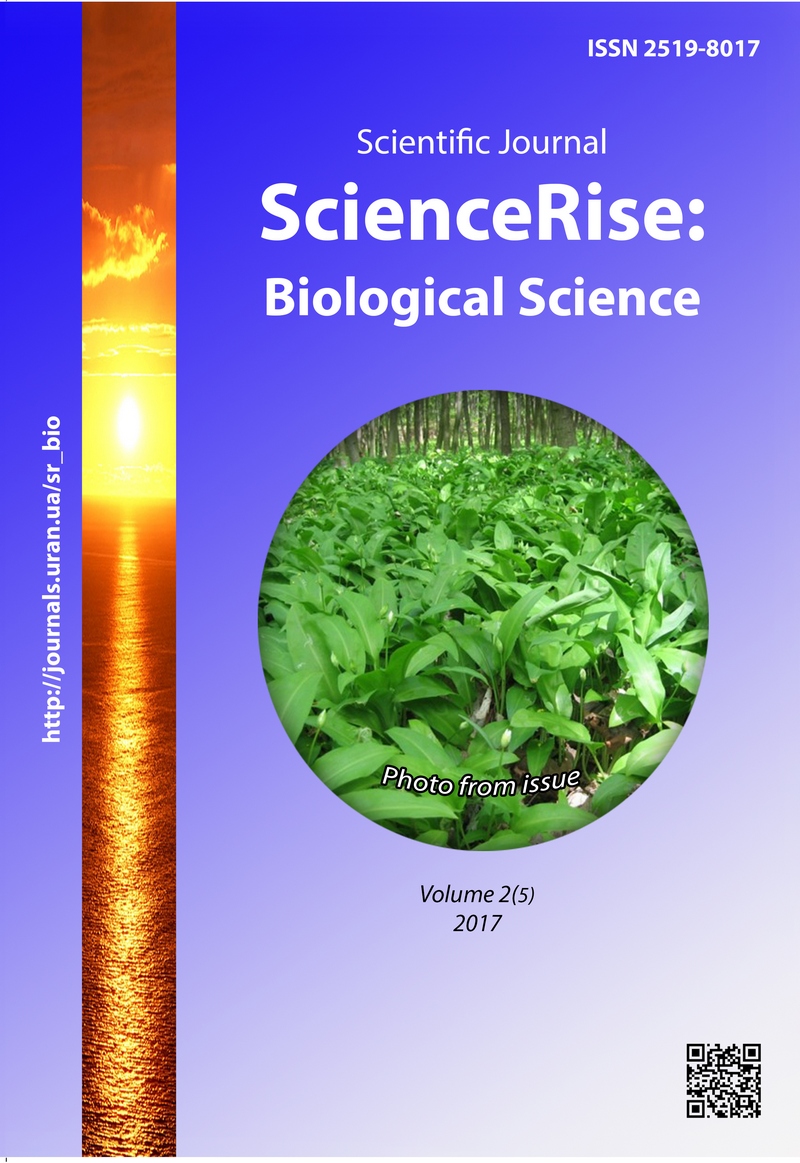Study of variety composition of microorganisms in the biofilm on the vascular and urinary catheters in muiti-field hospital
DOI:
https://doi.org/10.15587/2519-8025.2017.99686Keywords:
vascular catheters, urinary catheters, Candida fungi, biofilm, infectious complicationsAbstract
Aim. To analyze the variety composition of microorganisms which colonize the vascular and urinary catheters in patients, who stayed in reanimation and intensive care departments of multi-field hospital.
Materials and methods: The study was carried out on the base of multi-field hospital of National military-medical clinical center of ME of Ukraine in 2013-2015. There was determined the frequency of microbial biofilms formation on vascular and urinary catheters. The analysis of colonization of vascular and urinary catheters by causal organisms of infectious complications was realized.
Results: The frequency of microbial biofilms creation on vascular catheters was 55,6 %, on urinary ones – 97,7 %. It was established, that in the spectrum of causal organisms of catheter-associated infection in vascular catheters prevailed coagulozonegative staphylococci (29,3%), whereas in urinary ones - Enterococcus faecalis (31,8%) of all conventionally pathogenic microorganisms (CPM). The infection, conditioned by Candida fungi was revealed in 11,5% of cases.
Conclusions: At the study of material from vascular catheters, microorganisms were separated mainly in microbial associations, whereas biofilms on uninary catheters were formed by several varieties of microorganisms in most cases. Creation of biofilms on implanted biomaterials gives them the clinical importance, because the infected device acts as a reservoir of pathogenic microorganisms, resistant to the components of immune system and antimicrobial agents
References
- Berezhanskij, B. V., Zhevnerev, A. A. (2006). Kateter-associirovannye infekcii krovotoka. Klinicheskaja mikrobiologija i antimikrobnaja himioterapija, 8 (2), 130–144.
- O'Grady, N. P., Alexander, M., Burns, L. A. et. al. (2011). Guidelines for the Prevention of Intravascular Catheter-Related Infections. 83.
- Starchenko, A. A., Roshal, L. M. (2013). Trebovanija nacional'noj medicinskoj palaty po bezopasnosti medicinskoj dejatelnosti. Hi+Med. Vysokie tehnologii v medicine, 7. Available at: http://himedtech.ru/articles/?SECTION_ID=170&ELEMENT_ID=1629
- Tenke, P., Kovach, B., B'erklund Iohansen, T. E., Macumoto, T., Tamb'ya, P. A., Naber, K. G. (2008). Evropeisko-aziatskie rekomendacii po vedeniyu pacientov s infekciyami, svyazannymi s uretral'nym kateterom, i po profilaktike kateter-associirovannyh infekcii. Klinicheskaya mikrobiologiya i antimikrobnaya himioterapiya, 10 (3), 201–216.
- Harriott, M. M., Noverr, M. C. (2009). Candida albicans and Staphylococcus aureus Form Polymicrobial Biofilms: Effects on Antimicrobial Resistance. Antimicrobial Agents and Chemotherapy, 53 (9), 3914–3922. doi: 10.1128/aac.00657-09
- Rosenthal, V. D., Dwivedy, A., Rodriguez Calderon, M. E., Esen, S., Hernandez, H. T., Abouqal, R. et. al. (2011). Time-dependent analysis of length of stay and mortality due to urinary tract infections in ten developing countries: INICC findings. Journal of Infection, 62 (2), 136–141. doi: 10.1016/j.jinf.2010.12.004
- Rogers, M. A. M., Mody, L., Kaufman, S. R., Fries, B. E., McMahon, L. F., Saint, S. (2008). Use of Urinary Collection Devices in Skilled Nursing Facilities in Five States. Journal of the American Geriatrics Society, 56 (5), 854–861. doi: 10.1111/j.1532-5415.2008.01675.x
- Pronovost, P., Needham, D., Berenholtz, S., Sinopoli, D., Chu, H., Cosgrove, S. et. al. (2006). An Intervention to Decrease Catheter-Related Bloodstream Infections in the ICU. New England Journal of Medicine, 355 (26), 2725–2732. doi: 10.1056/nejmoa061115
- Klevens, R. M., Edwards, J. R., Richards, C. L., Horan, T. C., Gaynes, R. P., Pollock, D. A., Cardo, D. M. (2007). Estimating Health Care-Associated Infections and Deaths in U.S. Hospitals, 2002. Public Health Reports, 122 (2), 160–166. doi: 10.1177/003335490712200205
- Gould, C. V., Umscheid, C. A., Agarwal, R. K., Kuntz, G., Pegues, D. A. (2009). Guideline for prevention of catheterassociated urinary tract infections. 63. Available at: https://www.cdc.gov/hicpac/pdf/cauti/cautiguideline2009final.pdf
Downloads
Published
How to Cite
Issue
Section
License
Copyright (c) 2017 Janna Sobkova, Galina Filonenko, Olena Surmasheva, Michailо Rosada

This work is licensed under a Creative Commons Attribution 4.0 International License.
Our journal abides by the Creative Commons CC BY copyright rights and permissions for open access journals.
Authors, who are published in this journal, agree to the following conditions:
1. The authors reserve the right to authorship of the work and pass the first publication right of this work to the journal under the terms of a Creative Commons CC BY, which allows others to freely distribute the published research with the obligatory reference to the authors of the original work and the first publication of the work in this journal.
2. The authors have the right to conclude separate supplement agreements that relate to non-exclusive work distribution in the form in which it has been published by the journal (for example, to upload the work to the online storage of the journal or publish it as part of a monograph), provided that the reference to the first publication of the work in this journal is included.









